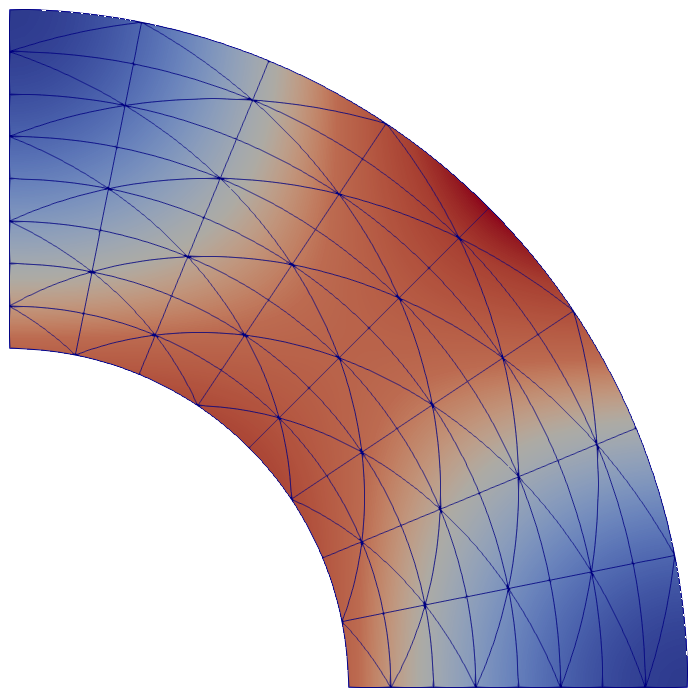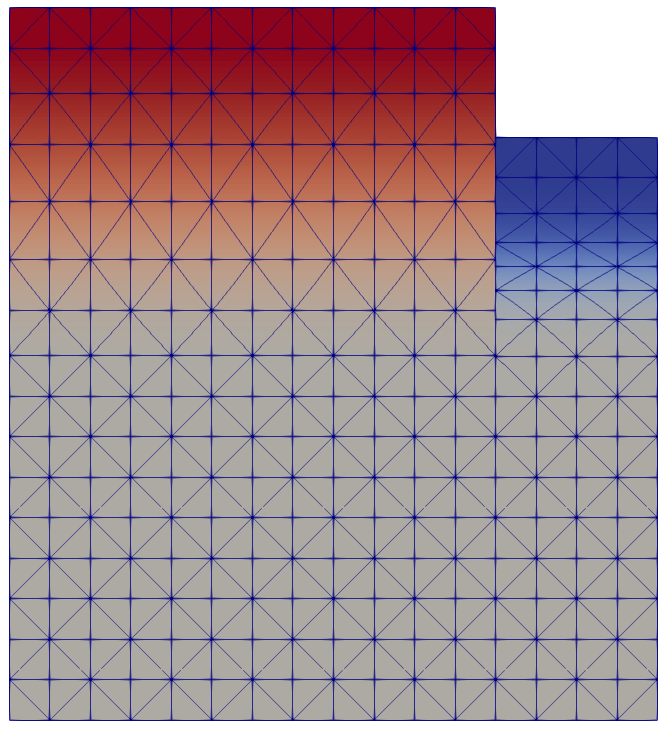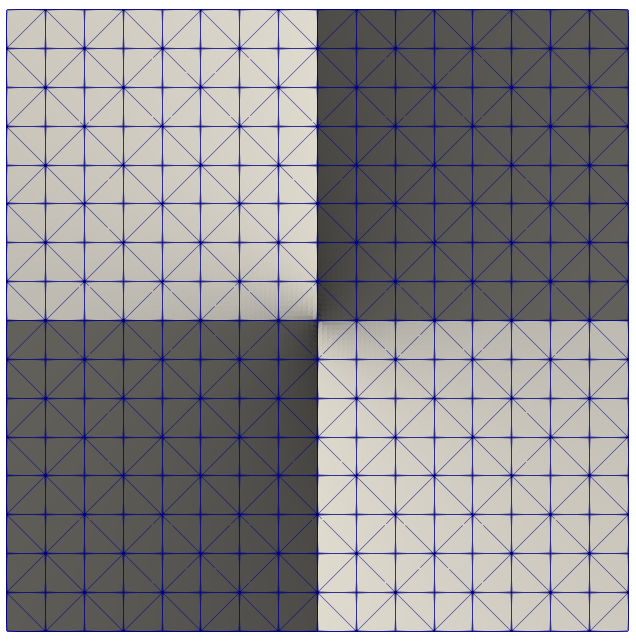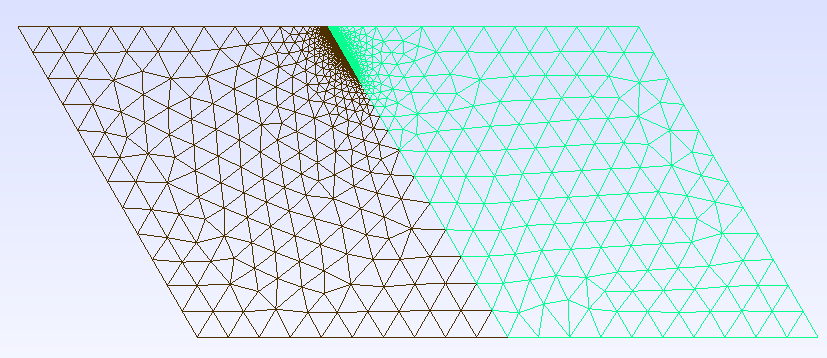Verification
We verify that our DG implementation achieves high-order convergence. We first describe several test problems for the linear elasticity solver, present a manufactured test problem for antiplane shear motion second, and lastly compare against the SCEC SEAS project. All test cases are given and can be reproduced from the github repository.
Static test problems
An overview of the problems presented here is given in the following:
cosine_variable

- Manufactured solution
- Heterogeneous material
- Curved boundary (annulus)
embedded_half

- Slip boundary condition
- Mesh is warped by displacement in figure
singular

- Poisson problem from (Rivière, 2008)
- Sharp material contrast (checkerboard)
- Singular gradient at centre
The following log-log plot shows result of a convergence study on the above test problems, where is the maximum polynomial degree.

We obtain the expected order of convergence for all three test problems, which is () for the first two problems, and 1 for the third problem (Rivière, 2008), due to a singular gradient at the origin. For problem embedded_half the solution is a polynomial of degree 7. Therefore, we reach the minimum error already with for degrees , as the solution is element of the respective finite element spaces. For problem singular we can only obtain order 1 convergence but still obtain a lower error with higher order schemes.
Antiplane shear motion
There are no known analytic solutions to a SEAS-type problem with rate and state friction. We therefore use a manufactured solution for antiplane shear motion to test our implementation, which is very similar to a manufactured solution of Erickson and Dunham (Erickson & Dunham, 2014). The following figure shows a convergence study. We choose the adaptive Dormand-Prince scheme for time integration, which is a fifth order Runge-Kutta scheme (using 6 right-hand side evaluations) with the fourth order embedded method.

The results show that our method achieves high-order convergence for SEAS problems, too, although the convergence order is apparently limited by the time integrator.
Plotting the error against a metric of work, which is the number of degrees of freedom times the number of time-steps times the number of Runge Kutta stages, we observe that high-order clearly pays off:

SCEC SEAS project comparison
The SCEC SEAS project (Erickson et al., 2020) aims to verify SEAS models by comparing codes of independent groups using different methods on well-defined benchmark problems. A web-based platform is provided which allows to upload and compare solutions. Tandem solutions for problems BP1-QD and BP3-QD match solutions of other codes very well and can be compared online.
For example, below we show the slip-rate time-series of the BP1-QD problem for the station located at 7.5 km depth.
An advantage of using a discontinuous Galerkin scheme is that meshes can be statically refined and we use high-order function spaces. For example, the mesh used in the comparison for BP3-QD has an on-fault resolution of 250 m and coarsens to 40 km edge-length towards the far boundary, cf. below figure. The on-fault resolution is 10x larger than the cell size of 25 m recommended in the benchmark description.

References
- Rivière, B. (2008). Discontinuous Galerkin Methods for Solving Elliptic and Parabolic Equations. Society for Industrial and Applied Mathematics. https://doi.org/10.1137/1.9780898717440
- Erickson, B. A., & Dunham, E. M. (2014). An efficient numerical method for earthquake cycles in heterogeneous media: Alternating subbasin and surface-rupturing events on faults crossing a sedimentary basin. Journal of Geophysical Research: Solid Earth, 119(4), 3290–3316. https://doi.org/10.1002/2013JB010614
- Erickson, B. A., Jiang, J., Barall, M., Lapusta, N., Dunham, E. M., Harris, R., Abrahams, L. S., Allison, K. L., Ampuero, J. P., Barbot, S., Cattania, C., Elbanna, A., Fialko, Y., Idini, B., Kozdon, J. E., Lambert, V., Liu, Y., Luo, Y., Ma, X., … Wei, M. (2020). The Community Code Verification Exercise for Simulating Sequences of Earthquakes and Aseismic Slip (SEAS). Seismological Research Letters, 91(2A), 874–890. https://doi.org/10.1785/0220190248
